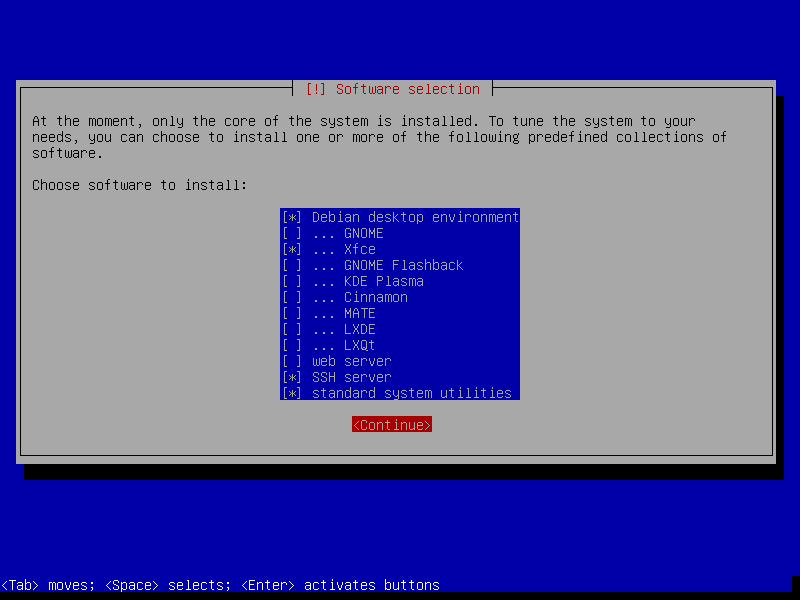How to Install AMD OpenCL Mining Drivers on Debian 11 Bullseye
This is a new one that works great and Debian is a super stable Linux variation that’s mostly compatible with Ubuntu but does not include any bleeding edge software. Debian is stable and that’s the whole point. It’s great for server installations and mining rigs.
Let’s install Debian 11.
Install Debian 11 Bullseye
You can install Debian 11 from USB using programs like Ventoy, Rufus
If you are using Linux you can write the image using dd.
sudo dd if=debian-11.3.0-amd64-netinst.iso of=/dev/sd* bs=1024k status=progress
You will be asked if you want to install a desktop environment during the installation. The preferred option is to use the desktop environment with XFCE and SSH.

Once completed you will be presented with the desktop. I use the root account for this install.
Open the terminal and do an update to check it’s fully updated.
apt update && apt-upgrade -y
Add Non-Free Repository Sources
Add the non-free repositories to Debian /etc/apt/sources.list
You can use nano /etc/apt/sources/list
Edit the file to look like the below. You are just adding contrib non-free to each line.
deb http://deb.debian.org/debian/ bullseye main contrib non-free
deb-src http://deb.debian.org/debian/ bullseye main contrib non-free
deb http://security.debian.org/debian-security bullseye-security main contrib non-free
deb-src http://security.debian.org/debian-security bullseye-security main contrib non-free
# bullseye-updates, to get updates before a point release is made;
# see https://www.debian.org/doc/manuals/debian-reference/ch02.en.html#_updates_and_backports
deb http://deb.debian.org/debian/ bullseye-updates main contrib non-free
deb-src http://deb.debian.org/debian/ bullseye-updates main contrib non-free
Installing AMD GPU Firmware
Update the packages. Feel free to fully update and upgrade if you like. It won’t make any difference.
apt updateNext, we install the non-free graphic cards drivers with:
apt install firmware-linux-nonfreeYou may get some errors about missing firmware. You can safely ignore it we won’t be needing it anyway.
Non-free means, not open source, AMD drivers are proprietary so hence the non-free part. It doesn’t mean you have to pay anything means that the software cannot be distributed and or modified, sold etc.
Downloading AMD GPU OpenCL Drivers
Next, we can go down the familiar route explained in previous guides. Download the old AMD drivers and install them with the following commands.
# Change to a directory to download the file
cd Downloads
# Download the tar file of AMD drivers
wget https://drivers.amd.com/drivers/linux/amdgpu-pro-20.40-1147286-ubuntu-20.04.tar.xz --referer https://www.amd.com/en/support/kb/release-notes/rn-amdgpu-unified-linux-20-40
# unzip the tar
tar -xJpf amdgpu-pro-*.tar.xz
# cd into the directory
cd amdgpu-pro-20.40-1147286-ubuntu-20.04Installing AMD GPU OpenCL Drivers
Next, the command to install only the OpenCL drivers
./amdgpu-install --opencl=legacy --headless --no-dkmsThe command should complete without error.
At this point, you can use clinfo to see if it recognises your gfx card.
apt install clinfo
clinfoYour computer should be mining now using Debian 11. This method was tested on RX 580 and works every time.
Complete!
At this point, you could install CoreCtl to overclock your cards in a GUI application.
The Install for CoreCtl is at the bottom of another guide I wrote.
Affiliate Links
Some great affiliate links give you free cash to spend on VPS. If you use these links I will get a small commission if you choose to sign up.
- Vultr.com – $100 free to spend on VPS
- DigitalOcean.com – £200 to spend on all services including VPS
- Atlantic.net – 1 Core 2GB RAM VPS FREE for 12 months from signup + $15
- Hetzner Cloud – $20 Free to use on all products
- GSuite – Google Workspace 10% off the first year
- Add
6AKCQG7CAFYCQWAto your Google Workspace Account



